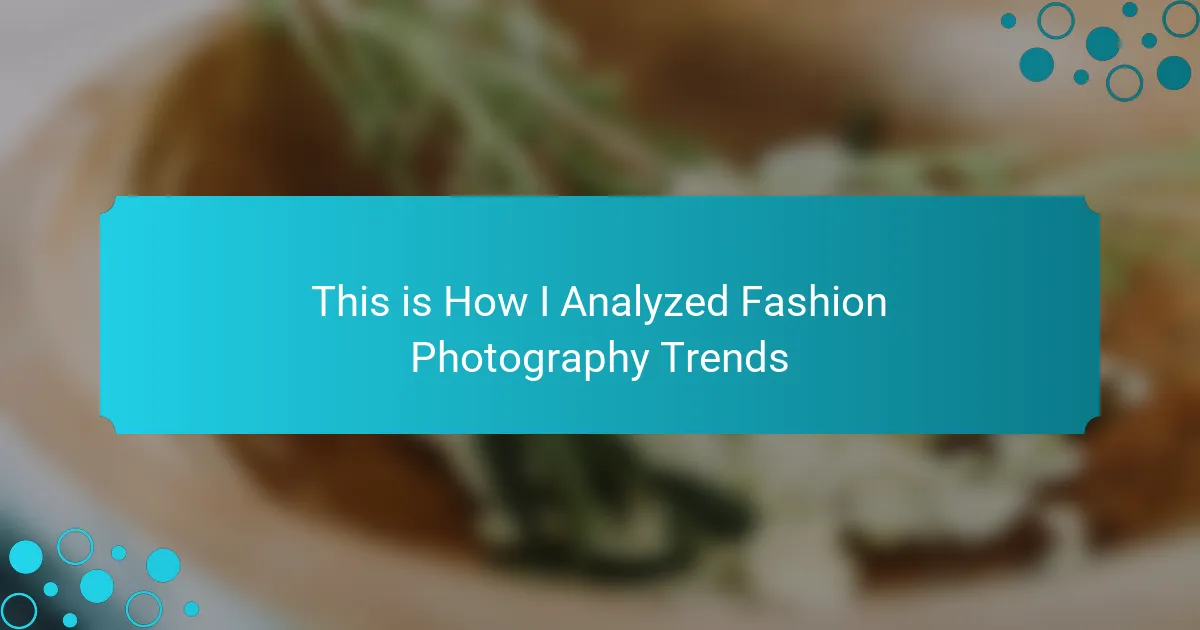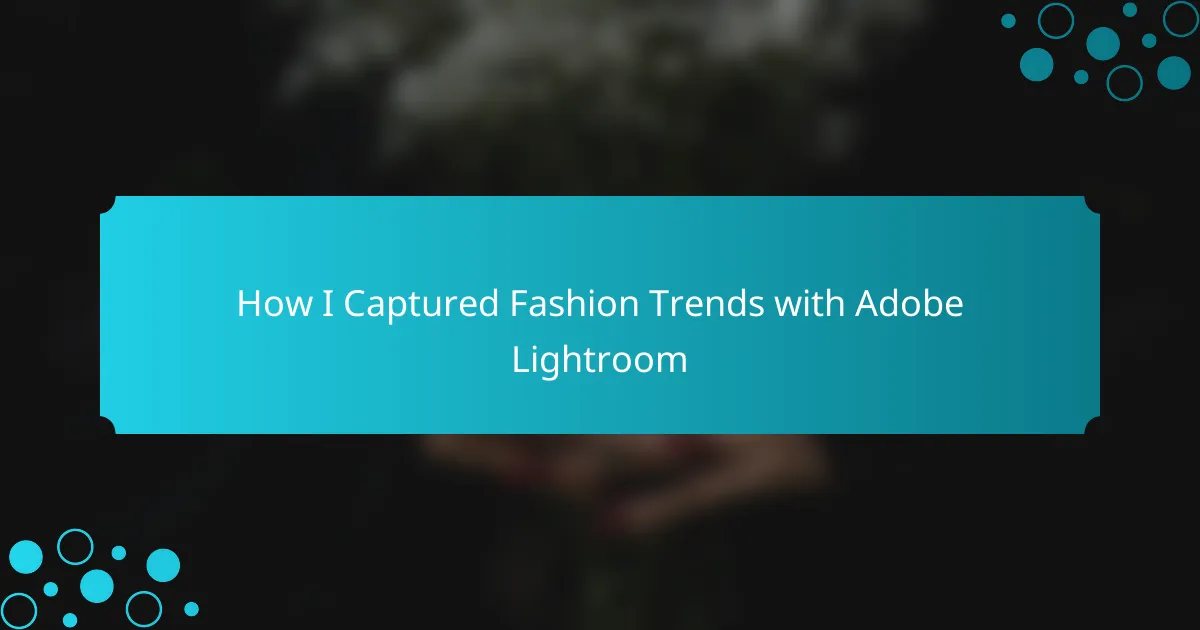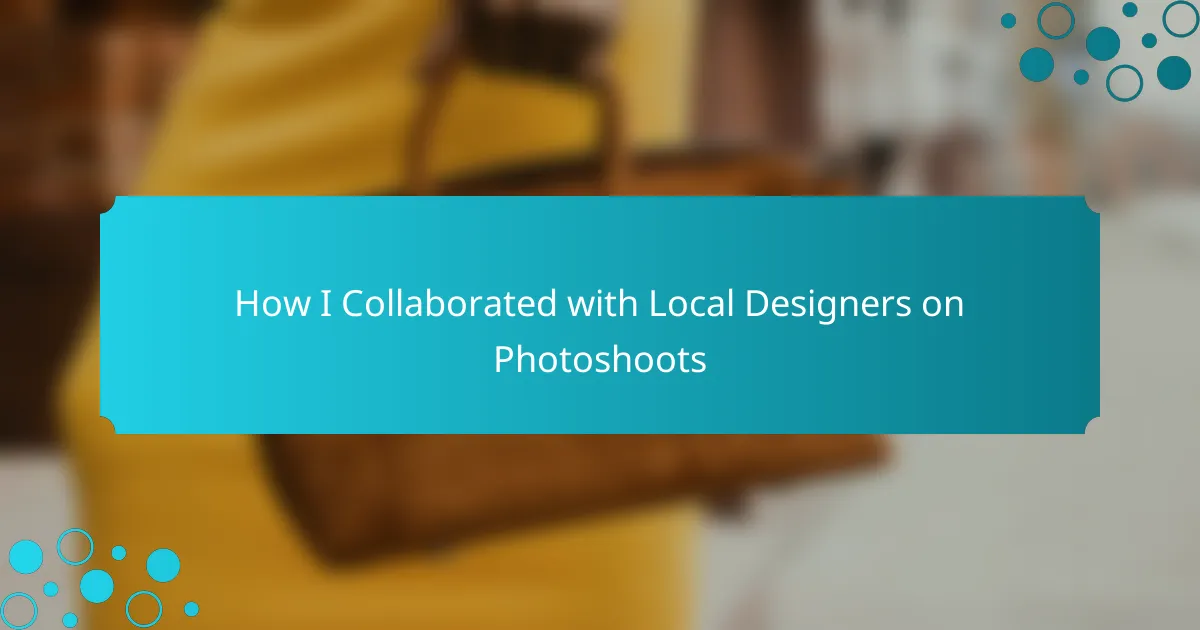Key takeaways
- Lighting is crucial in modeling, shaping the mood and highlighting features effectively.
- Soft lighting creates a flattering appearance, while hard lighting adds drama and intensity.
- Natural light enhances authenticity and warmth, with varying effects based on conditions like golden hour or overcast days.
- Experimenting with artificial light and tools like softboxes and colored gels can unlock new creative possibilities in photography.
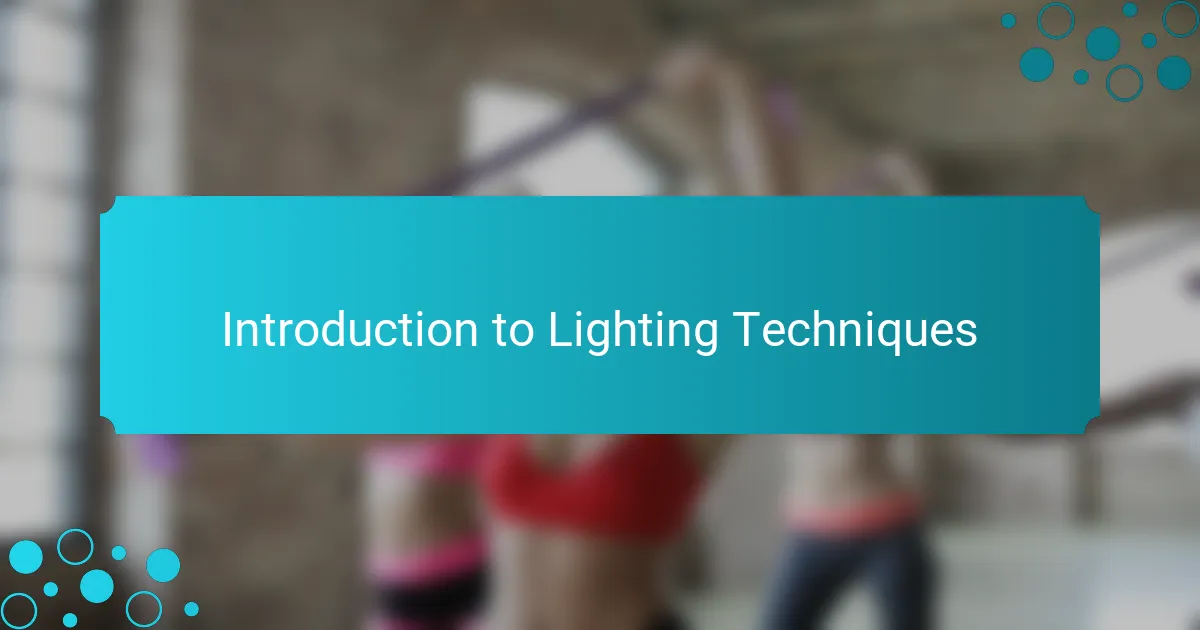
Introduction to Lighting Techniques
Lighting is often the unsung hero in the world of fashion and beauty modeling. I remember my first photoshoot where I struggled with harsh shadows—what a learning experience that was! It made me realize how crucial proper lighting is to enhance the beauty of the model and the clothes.
Have you ever noticed how a single source of light can completely change the mood of a photograph? I’ve experimented with different lighting setups, from soft diffused light that creates a dreamy atmosphere to dramatic backlighting that adds depth. Each technique tells a different story, and understanding this can elevate your work tremendously.
As I explored various lighting techniques, I found that the right lighting can transform even the simplest outfit into a stunning visual. It’s like painting with light, and each setup brings its own unique flair. Embracing these techniques has not only improved my skills but has also heightened my appreciation for the art of modeling.
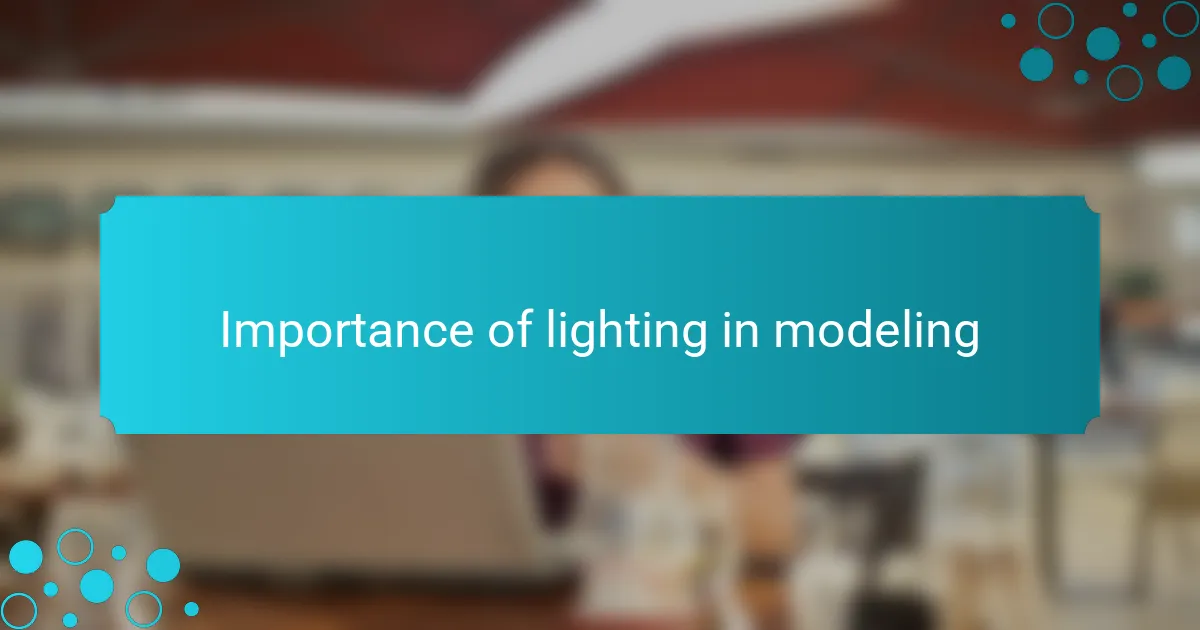
Importance of Lighting in Modeling
When it comes to modeling, lighting can make or break a shot. I’ve learned through countless experiments that the right lighting highlights features and sets the mood for the entire shoot. For example, using soft, natural light can create a warm and approachable vibe, while harsher, more dramatic lighting can evoke a sense of edginess or mystery.
I remember a fashion shoot where we tried different light sources. The difference was striking – soft lighting made the fabric colors pop and brought out the model’s expressions, while strong shadows added depth and drama to other shots. Each lighting choice transformed the emotion of the photographs, reinforcing just how crucial it is to experiment with lighting techniques.
Ultimately, lighting is not just a technical aspect; it’s an artistic tool that shapes the entire narrative of a fashion story, giving life to the visual elements in a unique way.
| Lighting Type | Effect on Modeling |
|---|---|
| Soft Lighting | Creates a gentle, flattering look that enhances skin tones and textures. |
| Hard Lighting | Produces strong shadows, adding drama and intensity to the scene. |
| Backlighting | Highlights the subject’s outline, creating silhouettes and adding depth. |
| Natural Light | Offers a fresh, vibrant feel that often makes colors look more vivid. |

Types of Lighting Techniques
Soft lighting is my go-to technique when I want to create a flattering and inviting atmosphere. I remember a shoot under soft, diffused light that transformed the model’s skin tones perfectly, giving the images an ethereal glow. It’s amazing how such a gentle approach can make every detail more appealing and elevate the overall aesthetic.
On the other hand, I’ve had my fair share of experiences with hard lighting, and the results are nothing short of dramatic. Once, we decided to play with strong shadows, and the effect was intense. The strong contrasts added an unexpected edge to the images, making the subjects appear more powerful and dynamic. It’s fascinating to see how much emotion can stem from such a straightforward choice in lighting.
I also love experimenting with backlighting. It’s incredible how illuminating the model from behind creates striking silhouettes and a sense of depth. I recall one session where the backlight added a magical quality to the shots, allowing for the fabric to become almost ethereal. Have you ever noticed how backlighting can give your images a storytelling element? It certainly does for me, opening up a world of visual narratives waiting to be explored.
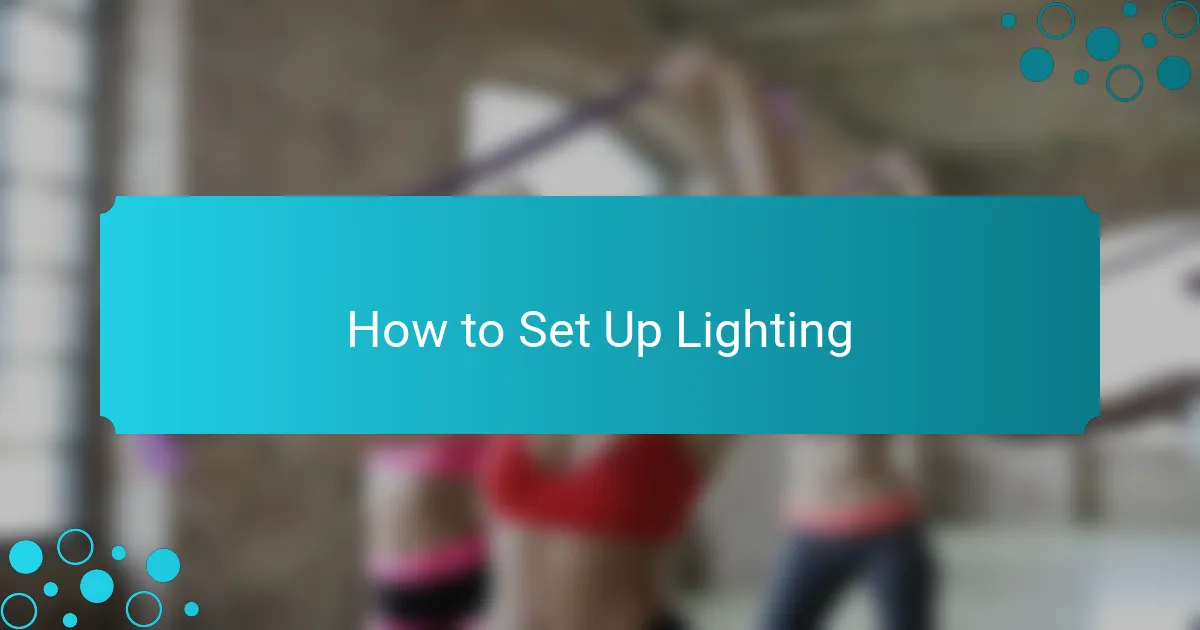
How to Set Up Lighting
Setting up lighting for fashion and beauty modeling can truly change the game. I remember the first time I tried natural light versus artificial light—there was such a distinct difference in the mood of the photos. Natural light, especially during the golden hour, adds warmth and a delicious softness that enhances skin tones beautifully, while artificial lights can be manipulated for dramatic effects or crisp details.
When experimenting with different setups, I found that three-point lighting creates a well-rounded look. The key is balancing the key light, fill light, and backlight to avoid harsh shadows and create depth. It’s exciting to play with positioning and intensity because it can completely transform the vibe of the shoot.
Here’s a simple comparison of natural light and artificial light to help you decide which might work better for your next project:
| Lighting Type | Characteristics |
|---|---|
| Natural Light | Soft, flattering, dependent on time and weather |
| Artificial Light | Consistent, adjustable, can create dramatic effects |
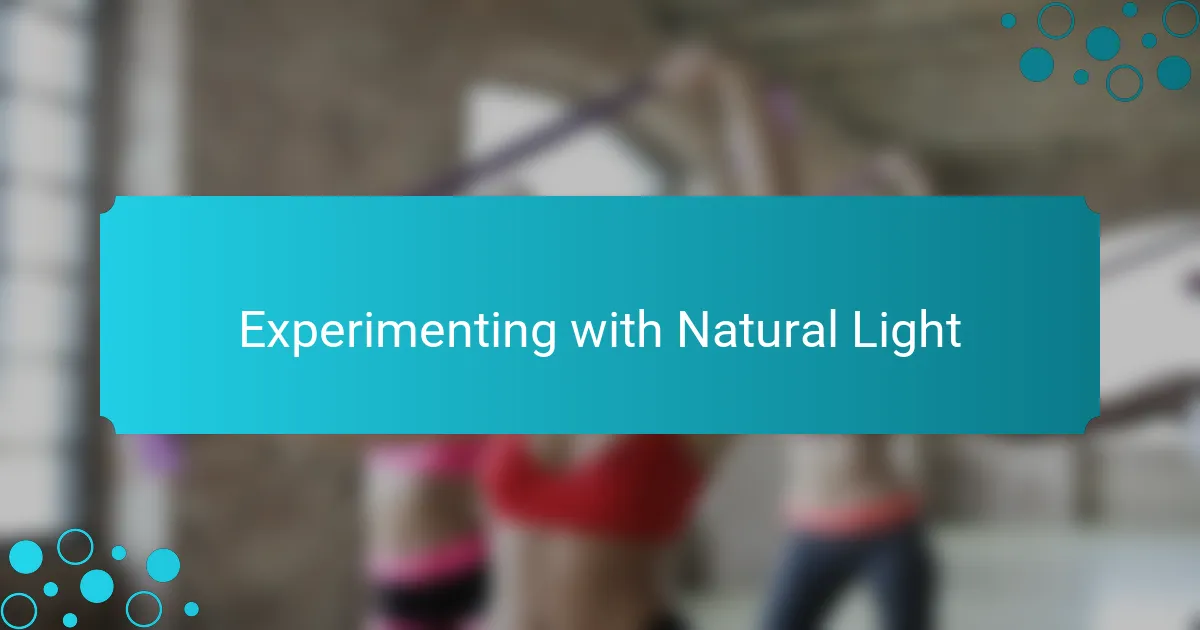
Experimenting with Natural Light
When I began exploring lighting techniques, natural light quickly became my favorite. The way sunlight can filter through a window or bounce off a surface creates a soft, flattering glow. I remember one afternoon, experimenting in my living room, how the changing light transformed the mood of my photos. It taught me the importance of timing and how a simple shift in position can make all the difference in capturing the perfect shot.
Playing with shadows is another exciting aspect of using natural light. I often found myself adjusting my angle to create interesting contrasts, adding depth to my images. There’s a certain magic in the interplay of light and shadow that enhances the textures in fashion, making the garments come alive.
Here’s a comparison of different natural lighting conditions I’ve experimented with:
| Lighting Condition | Effect on Photos |
|---|---|
| Golden Hour | Warm, soft light that enhances skin tones and adds a dreamy quality. |
| Overcast Days | Even light that reduces harsh shadows, perfect for delicate details. |
| Direct Sunlight | Strong light that creates sharp contrasts and shadows, great for dynamic looks. |
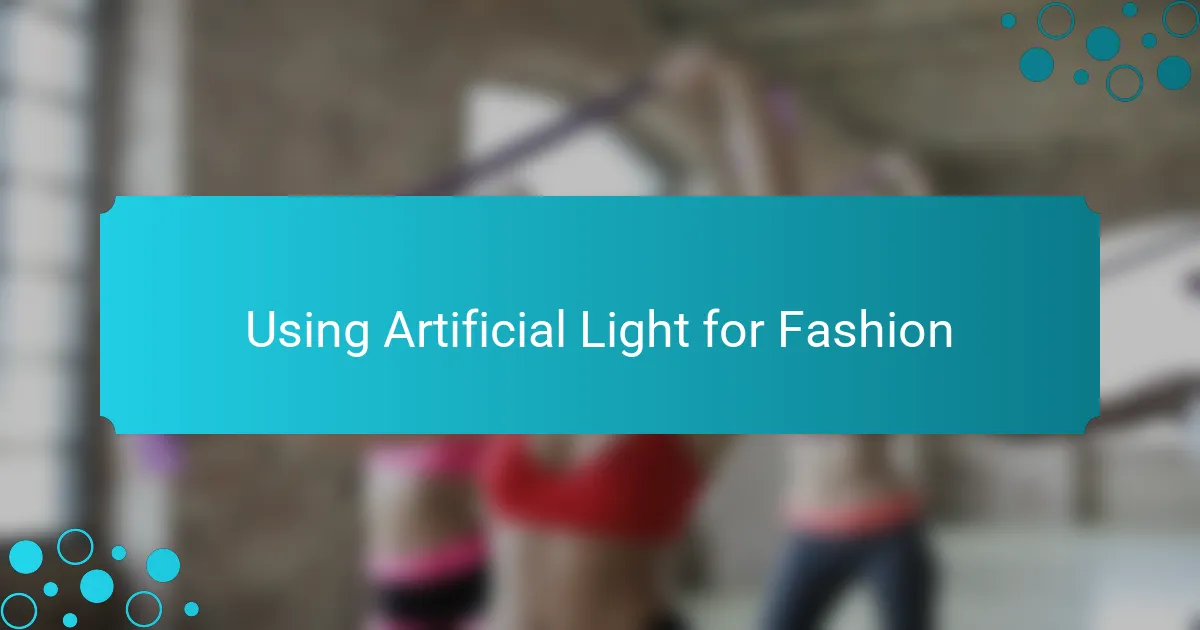
Using Artificial Light for Fashion
When I first started exploring artificial light for fashion shoots, I was amazed at how it transformed the mood of my photos. I remember trying a softbox for the first time; the way it diffused light made the model’s skin look flawless and ethereal. I felt excited because it opened up a whole new world of creative possibilities that I hadn’t experienced under natural light alone.
On another occasion, I experimented with colored gels on my lights. The vibrant hues added a dramatic flair to my images, creating striking contrasts that emphasized the outfits beautifully. Each click of the shutter felt like unveiling a piece of art that resonated with my vision, and I learned that artificial light can be a powerful tool to tell a unique story in fashion photography.
| Type of Lighting | Benefits |
|---|---|
| Softbox | Creates soft, diffused light; ideal for flattering portraits. |
| Ring Light | Even illumination and catchlights in the eyes; perfect for beauty shots. |
| Colored Gels | Adds dramatic effects and mood; enhances creativity in styling. |
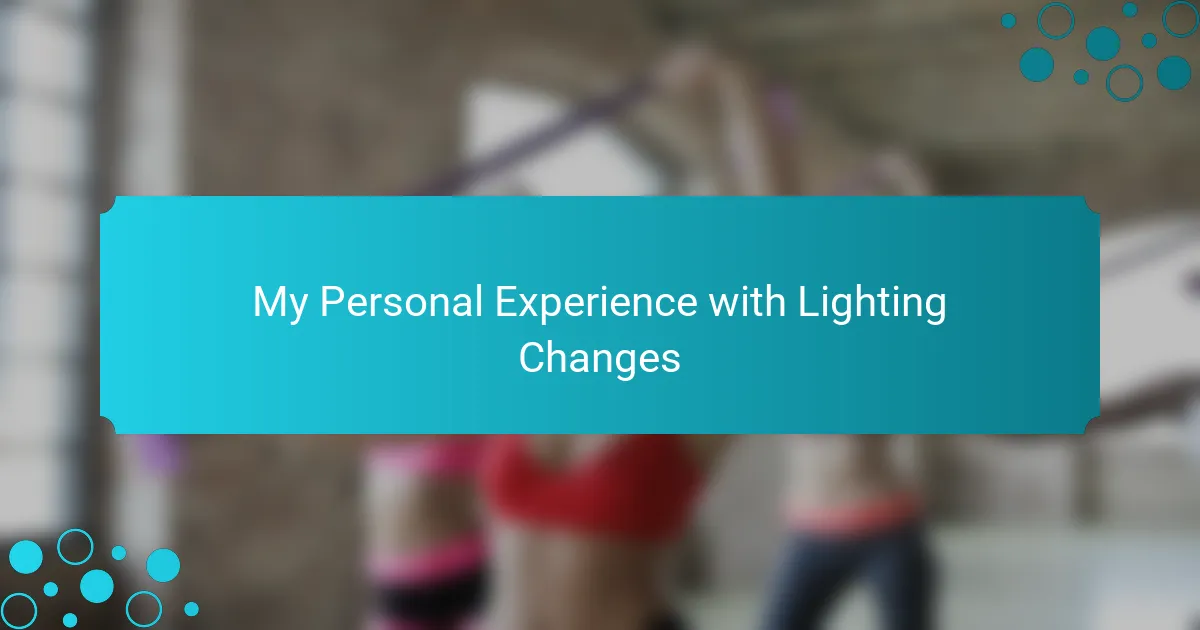
My Personal Experience with Lighting Changes
When I first started experimenting with lighting techniques during photoshoots, it felt like embarking on an exciting journey. I remember one session where I used natural light streaming through a window; the way it highlighted the model’s features brought a warm glow to the entire scene. It was magical to see how the right lighting could transform an ordinary setup into something breathtaking.
Gradually, I explored different sources and angles, discovering the impact of backlighting. During one shoot, I placed a light behind the subject, creating a stunning halo effect that really elevated the images. It taught me that lighting isn’t just a technical aspect; it’s an art form that adds emotion and depth to each shot.
- Using natural light made the images more vibrant and authentic.
- Experimenting with shadows helped in sculpting the model’s silhouette.
- Playing with colored gels introduced a playful vibe to my photographs.
- Backlighting created ethereal effects that brought out a sense of wonder.
- Soft diffused light softened features, lending a dreamy quality to the images.
